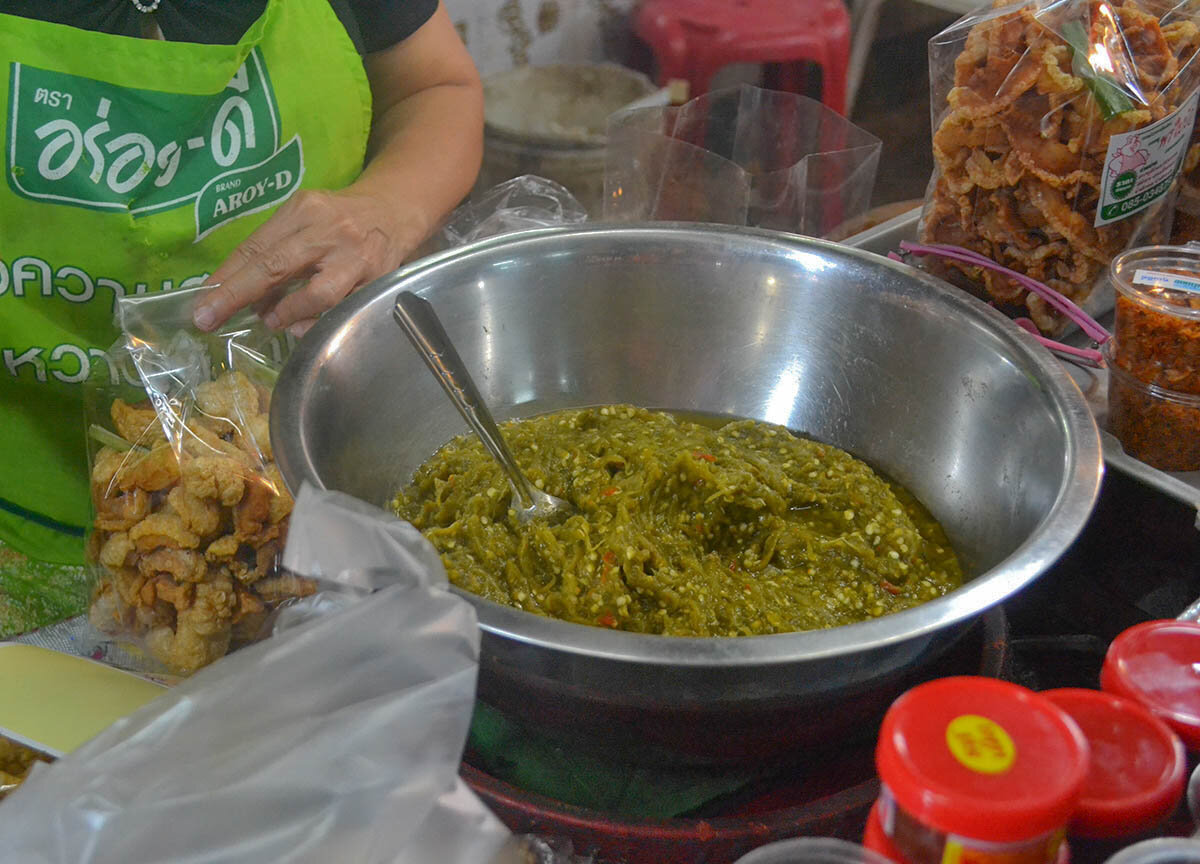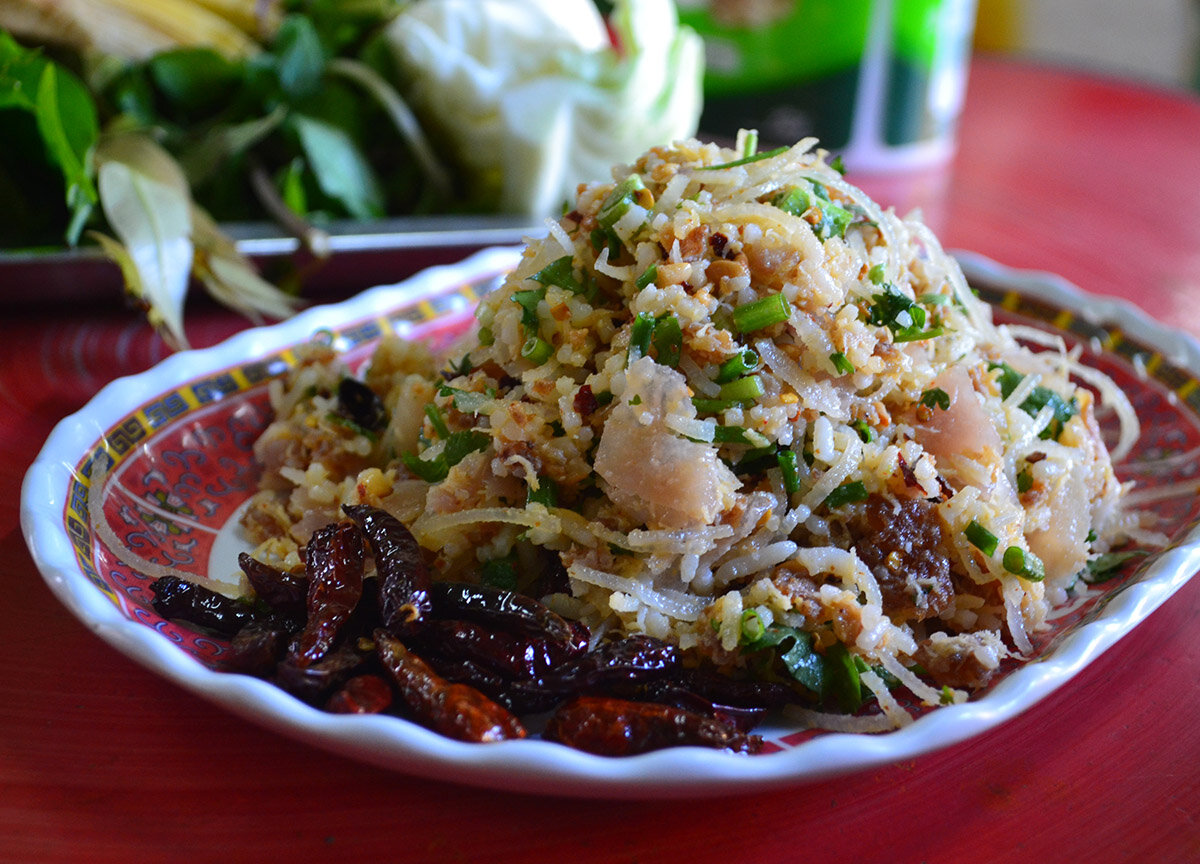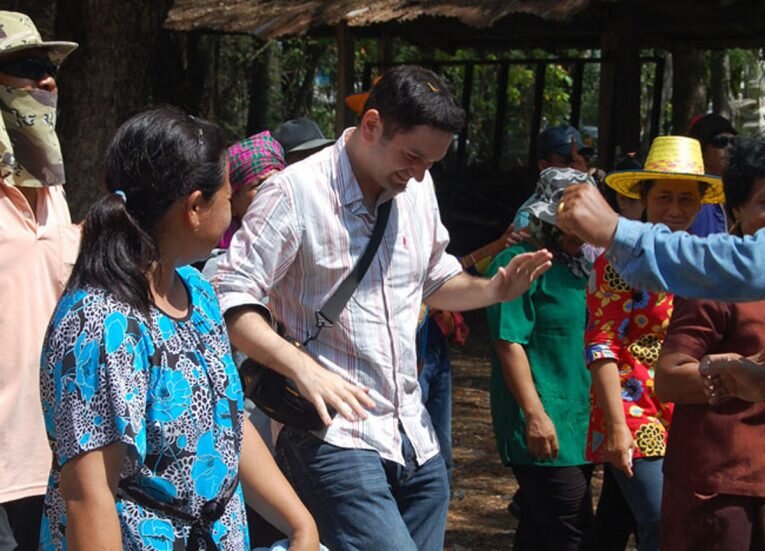Must-Try Street Food in Chiang Mai
Chiang Mai Street Food Basics
Chiang Mai street food is really not hard to find, but with such an abundance of eating going on in Thailand’s cultural capital, it’s really hard to know where to start and when to end. So I’ll begin with where to find the local Thai street food, and the Chiang Mai street food culture, as it always helps knowing the basics before trying to track down the best street food in Chiang Mai. And some of the popular Thai dishes are more commonly found at certain street food locales.
In Thailand, pretty much any food can be found on the streets, as Thai street food is more of a locale than a specific food set in itself. Meaning this list of famous Thai dishes in Chiang Mai could be potentially endless. However, some of the best Thai foods are more commonly found on the streets of Thailand than others, and while all the common staples of street food are found in Chiang Mai, I will focus more on the best foods of Northern Thailand, as they can often be tricky to find elsewhere in the country.
Again, there is an awful lot to share here, and it’s not just because Thai cuisine is wide and ranging, but street food in Chiang Mai is also continuously evolving to cater for different demands of both tourists and locals. With an ever-growing number of vegans and vegetarians in Chiang Mai there are also many animal-free options of Thailand’s traditional dishes.
Where to Find Street Food in Chiang Mai?
You are never far from street food in Chiang Mai, but recognizing it is not always so simple for newcomers, at least when it comes to what foods can be found or bought from different vendors. So, when visiting Chiang Mai, here are some common types of food vendors found throughout to look for.
Street Food Carts
These are the usual mobile food stalls that often specialize in one or two famous Thai dishes and can up and move at any time so they can be placed and found almost anywhere. However, most Chiang Mai street food carts and vendors will almost always be found at the same location simply so people know where to find them.
Khao Rad Kaeng
Khao Rad Kaeng’ translates as ‘rice with curry’, although these popular Thai street food vendors will normally sell a lot more than curries, and are a bit like canteens offering a wide range of popular Thai dishes served with rice. They can also be mobile but more than not they will be permanent and stationary at the roadsides.
Ahan Tam Sang
This is Thai food ‘made to order’ where you can order a wide range of dishes, mostly stir fries, that are thrown together and cooked fairly quickly in a wok. Again, these can be mobile street carts, but more likely they will be stationary and found at roadside kitchens.
Northern Thai Street Food in Chiang Mai
In exploring Chiang Mai cuisine, we are going much further than the Pad Thai and Banana Pancakes trails here, to not only share the staples of Northern Thai Food, aka Lanna Cuisine, but how they can be found as street food in Chiang Mai.
These are also the same staples that you’ll find throughout the rest of northern Thailand, and even when crossing over the regional borders to neighboring parts of Myanmar and Laos.
When you need captions for your photos, check out this lis of street food quotes.
Khao Soi: A Famous Chiang Mai Street Food
This curry-based noodle soup should top any list of street food in Chiang Mai. It is not only famous in the region, it is now one of the most popular foods in Thailand. You’ll find it all over the city, where it is commonly served from pre-prepared curry canteens.
Khao Soi curry, like most Thai curries, uses a coconut base of freshly pounded curry paste made from red chilies. The curry is served over boiled egg noodles and topped with more egg noodles that have been fried until delightfully crispy to provide the dish a welcome crunchy element.
While normally Khao Soi uses chicken legs/drumsticks, these days there are many variations, including vegetarian and vegan options.
Khanom Jeen Nam Ngiao
While not as famous as Khao Soi in Northern Thailand, Khanom Jeen Nam Ngiao is huge locally, and can be found served side-by-side at most Khao Soi curry canteens.
Similar to Khao Soi, Khanom Jeen is a noodle soup, but it uses fresh rice noodles (khanom jeen) rather than wheat-based egg noodles. It features a spicy tomato-laced soup broth.
The meat used is normally minced pork balls, giving rise to the nickname “Thai Spaghetti Bolognese.” The addition of cubes of pig’s blood is an authentic part of the recipe that takes many foreign visitors by surprise.
Sai Oua Sausage
Another essential Northern snack is Sai Oua, a local favorite sometimes called “Chiang Mai sausage” due to its popularity in the city. This is despite the fact that the sausage is sold much more widely in the north and is also a staple in Laos next door.
Sai Oua is a spicy/sour pork sausage fusing the iconic Thai “Tom Yum” flavors with lemongrass, kaffir lime leaves, galangal, and fiery red chilies. As a street food in Chiang Mai, the best is found at both day and night markets where it is chopped into bite-sized bits and served with sticky rice.
Nam Prik Chili Dips
Another Northern Thai staple(s) are two chili dips that are traditionally served side-by-side with other bites and nibbles at traditional ‘Khantoke’ dinners in Northern Thailand.
“Nam Prik” more or less translates as chili dip, and Chiang Mai is famous for “Nam Prik Noom,” which is made from toasted green chilies, and “Nam Prik Ong,” which prepared from minced pork and dried red chilies.
At Chiang Mai food markets and street food stalls, the two dips are often sold in bags along with sticky rice. Pork crackling and crispy chicken skins (kap moo and kap kai) are also added for dipping.
Moo Yor Sausage
Moo Yor is more famous in other parts of northern and northeastern Thailand, including Chiang Rai and Ubon Ratchathani. But since it’s another of the essential northern Thai staples, it’s never hard to track down this street food in Chiang Mai.
Moo Yor is more or less steamed pork, with a white complexion, and occasionally with speckles of black pepper. While it’s probably most famously eaten in a “Yum” salad (Yum Moo Yor), it can also be found on skewers for snacking on as a street food. In addition, it is occasionally deep-fried (Moo Yor Tod) and sold with a chili dip.
Mala Kebabs
These mouth-numbing kebabs are a new addition to Thai street food, and are huge in Chiang Mai, despite being a copy of China’s popular Sichuan chuan kebabs.
These kebabs use the Sichuan-style seasoning of chilies and mouth-numbing Sichuan peppercorns, known as mala. They can be found grilling over flaming charcoals at both street food stalls and dedicated outdoor restaurants in Chiang Mai.
Due to their prominence in the city, they could arguably be considered Northern Thai food, as you could also argue that Khao Soi originates from Myanmar, Moo Yor feom Vietnam, and Sai Oua from Laos. They are a great example of how street food evolves in Thailand.
Miang Kham
Miang Kham, which translates as ‘one bite wrap’ from Thai, is a popular snack from northern Thailand, and is a favorite with starters or taster sets at fancier restaurants nationwide. Traditionally Miang Kham is a mix of sweet, sour, salty and hot signatures of Thai cuisine with cuts of fresh chilies, garlic, lime, shallot, and peanut all wrapped together in a ‘Cha Plu’ leaf. It is then eaten in one bite. Miang Kham is probably best found with other local nibbles at popular northern ‘khantoke tables’, but can be found pre-wrapped at markets and street food to eat on the go.
Naem
Thailand is known for its sour pork sausages, including the Isaan sausage which is one of Thailand’s most common street foods, originating from the northeastern region of Thailand. But in Chiang Mai it is all about Naem which is a sour ground pork meat made with fermented sticky rice and garlic. As street food it is commonly sold simply grilled over hot charcoals or as a Yam Naem where it is combined with curried rice and deep fried as a ball before it is broken apart again to be eaten.
About the Author
Living the best of both worlds. Allan and his partner Fanfan spend half the year in Asia and the other in Europe based between the rice fields of Thailand and Bangor in Northern Ireland. When not travelling they regularly blog about Food in Northern Ireland as well as sharing authentic Thai cooking and recipes at Fanfan’s kitchen. Find Allan Online: Website, Instagram, Facebook, YouTube














